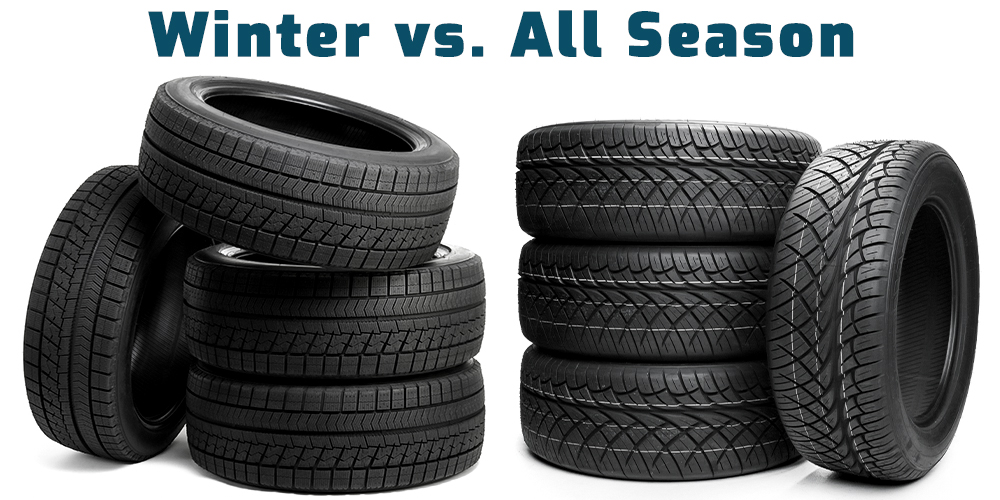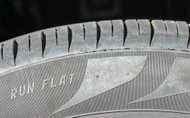What Makes a Winter Tire?
Posted by Agota Szabo on Feb 2nd 2022
Driving can easily become challenging in winter conditions, even if you have an excellent winter tire set on your vehicle. It is important to have the correct tires when driving on ice and snow-covered road surface conditions.
Even if you don't live in areas with heavy snowfall or black ice, installing snow tires will save you from headaches. Their unique tread patterns and soft rubber ensure your safety, by keeping your vehicle on the road in freezing temperatures.
So, what actually makes a winter tire?
How does a Winter Tire Work?
As opposed to all season tires, snow tires are designed for winter conditions. They provide better traction in winter weather and cold temperatures, or on snowy or icy roads and dry pavement.

Winter snow tires combine their tread rubber and design with their deeper tread depths to improve traction in winter driving conditions. In other words, they ensure their secure performance in cold weather.
But, how do you know what to look for when buying new winter or snow tires?
Rubber Compound
Snow tires are molded from a soft tread rubber. This is able to maintain its flexibility even in colder temperatures. Unlike, all season tires, snow tires do not harden when the temperature drops.
Therefore, winter tires work to allow the rubber to stay soft in such situations. This keeps the tire pliable in colder temperatures, optimizing the treadwear and traction on snow and ice.
Tread design
The tread pattern of snow tires ensures their grip on ice- and snow-covered road surfaces. These elements feature multiple biting edges which enhance traction. Winter tires usually feature directional or asymmetric placement of the tread blocks.
Additionally, to combat winter weather conditions, a snow tire must feature a deep tread. This is to prevent snow buildup blocking the road contact and to improve traction on packed snow.
Siping Detail
Sipes are small slits cut into the footprint of the tire. They provide traction, especially in winter conditions. Winter tires designed with a detailed siping placement generate a higher number of biting edges to grip the driving surface.

The sipes are especially helpful when the vehicle needs to perform in snowy and icy conditions. They create traction as the footprint has more edges that come into contact with the road.
Studs
Some winter tires come with rubber or metal studs. These studded snow tires are for extreme winter weather conditions. If the tread depth allows it and depending on the tire size and application, these tires will provide exceptional traction on snow and ice.
However, the use of studded tires is regulated by law. This is because studded tires can easily damage the road when no snow or ice is located on it. The studs will dig into the pavement, damaging the road and causing potholes to form.
The Difference Between a Winter Tire and an All Season Tire
If you plan to drive your vehicle in the winter months, we recommend mounting winter tires. This will ensure your driving safety on ice and snow-covered roads.
But, would all season tires be for all year round? Even if you live in areas that experience harsh winters?
The simple answer is: that is not a good idea.
While you can find some all season tires marked with the three peak mountain snowflake symbol, most of them are not true year round models. This means that they will not provide the necessary traction your vehicle needs for a safer performance. If you wish to read more on this subject, check out our blog post about the capabilities of all season tires.
For this reason, winter tires exist. Even if you don't get studded tires, winter models will still be able to provide the traction needed for severe winter performance.

But, what's the drawback of snow tires? - you may ask.
The problem with winter tires is that they should only be used in winter conditions. The softness of the compound and the details of the footprint ruin the tire's performance in warmer temperatures. It causes excessive treadwear, shortening the service life. The high-density siping detail ruins the traction and causes acceleration problems.
As a result, it is important to know which tire set to get when purchasing new models. Summer, all season, and winter tires all have their own applications and performing capabilities. Your vehicle will thank you for getting the correct tire set in the long run.
If you are looking to buy winter tires, your search is over. At TireMart, we offer the best prices available! Take a peek at our inventory of winter tires, and shop comfortably online!
















